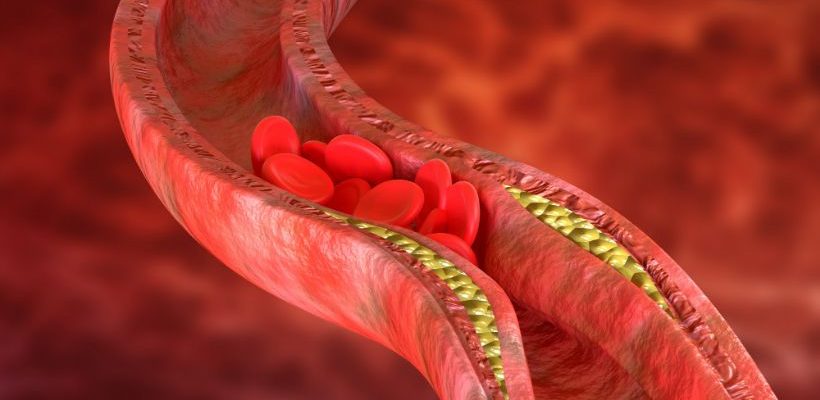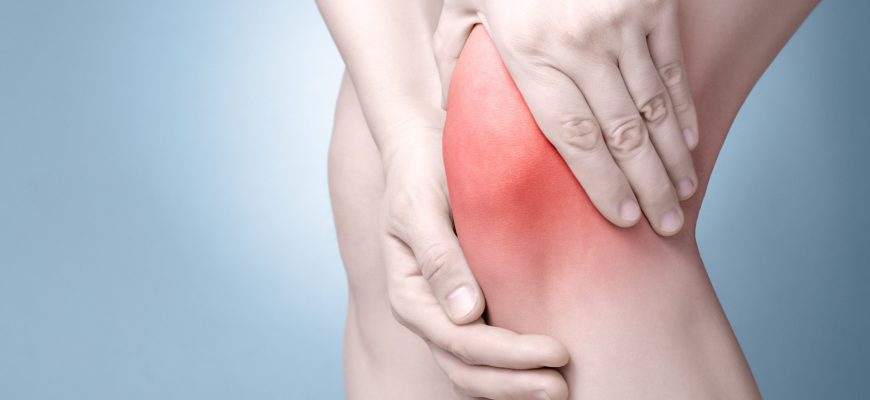Understanding How to Lower Triglycerides Naturally?

Recent studies have shown that borderline patients with high levels of triglyceride can lower triglycerides with a change in lifestyle and a change in diet. Yes, you heard it right!
Triglycerides are a form of fat in the bloodstream that can rise if someone is overweight, inactive, a smoker, consumes too much alcohol or eats a diet high in carbohydrates. Are you wondering why and how to lower triglycerides naturally? Well, lowering triglycerides naturally can help reduce the risk of heart disease and improve overall health. And as for how to lower it, keep reading as we are going to tell you about the best way to lower triglycerides.
Understanding the Levels of Triglycerides
What is a normal triglyceride number and how to lower triglycerides? Now that you know what are, let us understand this as well. Experts from a screening study demonstrated that people who have less than 100mg/dL of triglycerides are the healthiest and that these levels are optimal. Remember that the normal triglyceride level for males and females might differ a bit.
Borderline triglyceride patients have levels between 150-199mg/dL. Remember that borderline patients should consider losing 5% of their body weight and limiting their calorie intake along with limiting sugars to less than 10% of their total intake. You should know that weight loss has shown valuable changes in lipids and lipoproteins. So, with a 5-10% loss of body weight comes positive benefits such as a 20% reduction of triglycerides, a 15% decrease in LDL cholesterol, and an 8-10% decrease in HDL cholesterol.
2 Ways to lower triglycerides
Now, get ready to know how to lower triglycerides naturally as we are about to tell you how to quickly lower triglycerides.
Triglycerides diet
There has been a lot of confusion about the best way to lower triglycerides and how much it actually affects the cardiovascular system. Borderline patients are recommended to consume no more than 100g of fructose from processed foods. Foods that assist in triglyceride treatment include fruits and vegetables that are low in fructose, such as strawberries, grapefruit, bananas, and peaches should be eaten. A diet to lower high TGL causes should consist of high-fiber whole grains and healthy unsaturated fats such as omega-3 fatty acids along with high triglyceride meds.
Triglycerides and exercise
Remember that you should do exercise to lower triglycerides. We are saying this because regular exercise can help lower triglycerides by increasing muscle mass, improving insulin sensitivity, reducing body fat, and making sure that you have only good triglycerides. If we talk about the duration of exercise, at least 150 minutes per week should help reduce triglycerides.
Conclusion
So, if you didn’t know how to lower triglycerides naturally, we hope that now you are familiar with everything about it. And we believe that when you know how to reduce high triglyceride symptoms, all you need to do is manage your diet and exercise.
Also Read
7 GAME-CHANGING TIPS FOR MANAGING TYPE 2 DIABETES
EXPLORING THE INTRICATE LINK BETWEEN CORTISOL AND SLEEP PATTERNS
DISCOVERING 5 EFFECTIVE WAYS FOR PREVENTION OF ASTHMA
10 Miraculous Health Benefits of Pomegranate

The pomegranate is a unique fruit in comparison to many others, isn’t it? Well, of course, it is! It consists of a hard exterior that protects the pomegranate seeds that are embedded inside.
Pomegranates have been used in many literary works as a symbol of fertility and marriage.
The best part is that there are numerous benefits of pomegranates and numerous myths are written based on pomegranates as well!
Do you know that people in the early ages even believed in the pomegranate’s ability to heal and restore health? Yes, that’s true. Even in this century, pomegranates are considered to be one of the healthiest fruits out there.
Pomegranate is rich in minerals, vitamins, and other beneficial properties. These consist of antioxidants, folic acid, iron, and more. So, ready to learn about the health benefits of pomegranates? Let’s go then!
Health Benefits of Pomegranate
1. Pomegranate Nutrition Facts
Pomegranate, a jewel-like fruit, not only entices with its rich taste but also packs a punch when it comes to nutrition. Bursting with antioxidants, vitamins, and minerals, pomegranate offers miraculous health benefits.
For instance, if you check pomegranate juice nutrition, you’ll realize that it delivers a refreshing dose of antioxidants. Similarly, pomegranate seeds nutrition provides fiber and healthy fats to the body.
According to experts, the nutritional values of pomegranates support a strong immune system and heart health.
2. Heart Health
Many health practitioners believe that the antioxidants in pomegranate aid the heart by lowering plaque buildup in the arteries. So, one of the benefits of pomegranate juice is that it reduces plaque in the blood vessels and allows proper blood flow.
In addition, pomegranates have been found to lower levels of LDL (low-density lipoprotein) cholesterol as well.
3. Cures Hypertension
As per the practitioners, another benefit of pomegranate is that it has a positive effect on blood pressure, making it a potential natural treatment for hypertension. Drinking about ¼ cup of pomegranate juice regularly allows for good circulation and control of blood pressure.
4. Prevents Cancer
Pomegranate has been shown to have potential cancer-fighting properties, making it a promising choice for cancer prevention. Better yet, studies show that one of the health benefits of pomegranate is that it can help prevent certain cancers like lung cancer, breast cancer, and prostate cancer.
5. Skin & Weight Loss Benefits of Pomegranate
Pomegranates are also an excellent fiber source found in pomegranate seeds. You should know that just a half-cup serving of pomegranate seeds provides about five grams of fiber, that’s 20% of the recommended daily intake of fiber. This further facilitates one of the greatest pomegranate benefits for the skin and keeps the skin healthy and glowing.
According to experts, pomegranates have the ability to reduce weight. So, it won’t be wrong to say that pomegranate benefits for weight loss are among of its biggest benefits. For this reason, eating pomegranates can be especially beneficial for those who are willing to lose weight.
6. Kidney Stones
Research has revealed that drinking pomegranate juice can treat kidney stones. Owing to its abundant antioxidants and unique compounds, pomegranate juice for kidney stones may prevent the formation of these painful stones.
Therefore, incorporating this tasty beverage into your routine could reduce your risk of developing kidney stones and promote better kidney health overall.
7. Antimicrobial Properties
Experts also believe that pomegranates contain natural compounds that can combat bacteria, viruses, and fungi. This means that antimicrobial pomegranate can help improve oral health and boost your immune system.
8. Exercise Endurance
Now if you’re confused about how pomegranate and exercise endurance are related, you should know that the mighty pomegranate or its juice can boost endurance. Studies have shown that pomegranate contains antioxidants that can fuel your workouts with natural power.
9. Brain Health
When you think about pomegranate’s effect on the brain, researchers have found that it also contains polyphenols that support cognitive function and protect against age-related decline. A Pomegranate for the brain can improve memory, boost focus, and promote overall brain health.
Other than these, Pomegranate extract benefits the brain in many other ways including mood regulation, reduced oxidative stress, and more.
10. Digestive Health
Last but not least, Pomegranate’s high fiber content aids in smooth digestion and promotes healthy bowel movements. Simply put pomegranate juice for the digestive system possesses natural anti-inflammatory properties that soothe the digestive system and alleviate gastrointestinal discomfort.
Final Words
Despite all the benefits of pomegranates, they are still not eaten on as large of a scale as other fruits. It won’t be wrong to say that a pomegranate a day keeps the doctor away! Some even believe that eating pomegranates when you are sick can help you eliminate a common cold.
References
- Pomegranate as a Functional Food and Nutraceutical Source. USDA Agriculture Research Service.
https://www.ars.usda.gov/ARSUserFiles/60701000/Misc%20Pubs/o8.pdf
- Pomegranates, Raw. USDA Agriculture Research Service.
https://fdc.nal.usda.gov/fdc-app.html#/food-details/169134/nutrients
- Pomegranate for Prevention and Treatment of Cancer: An Update. National Library for Medicine.
https://www.ncbi.nlm.nih.gov/pmc/articles/PMC5560105/
2014. Fiber content and quality of pomegranate (Punica granatum L.) Cultivated in a Coastal Oasis. International Journal of Current Microbiology and Applied Sciences.
https://www.ijcmas.com/vol-3-2/Elhem%20Mansour,%20et%20al.pdf
- Herbal and Nutritional Treatment of Kidney Stones. American Herbalists Guild.
https://www.americanherbalistsguild.com/files/journal/vol%2010%20no%202/Kidney%20Stones%20V10N2.pdf
- Effect of pomegranate extracts on brain antioxidant markers. National Library of Medicines.
https://www.ncbi.nlm.nih.gov/pmc/articles/PMC5488477/
Also read
DISCOVERING 5 INCREDIBLE HEALTH BENEFITS OF FATS
UNCOVERING TOP 6 EXPERT TIPS FOR A HEALTHY HEART
EFFECTIVE WAYS TO PREVENT ACNE FOR CLEAR SKIN IN ADULTS
10 DANGEROUS EFFECTS OF STRESS ON YOUR HEALTH AND HAPPINESS
DISCOVERING IMPACTFUL WAYS FOR TYPE 2 DIABETES MANAGEMENT
Discovering Impactful Ways for Type 2 Diabetes Management

We know that finding out that you have type 2 diabetes can come as a shock. But, once you know it, you need to find ways for type 2 diabetes management. It’s true that you’re going to need to make some major adjustments to your daily routine. But with the right plan to manage type 2 diabetes, you don’t have to let it ruin your life.
Developing a care plan after being diagnosed with type 2 diabetes will help you manage your diabetes and take back control over your life. Wondering how to do it? Well, continue reading to find out how you can live happily with a Type 2 Diabetes management plan.
1. Make A Type 2 Diabetes-friendly Diet Plan
If you want to maintain your blood sugar levels, you’re going to need a good diet plan. Remember that you can make your daily routine a lot easier by planning your meals ahead of time.
Stock up on healthy and nutritious meals that can be made quickly and help you in type 2 diabetes management. Start by buying whole foods such as fruits and vegetables. For protein, you should stick to organic, lean meats such as chicken, turkey, and fish.
You can also find plant-based protein sources such as spinach, quinoa, and legumes. But when you are choosing plant-based proteins, be sure to limit the number of carbohydrates you eat. On average, you should get 45-60% of your daily calories from carbs as someone who is looking forward to managing type 2 diabetes.
Getting into a comfortable routine and planning will help you stick to a type 2 diabetes diet plan and avoid dangerous spikes in your blood sugar levels. You should also get in the habit of checking food labels and looking for nutritional facts about the foods you eat to be informed. You can consult with a nutritionist to help you get on track and help you eat a well-rounded diet.
2. Watch Your Carbs Intake
Since carbohydrates turn to sugar in your body, it’s no wonder that watching your carbs is a big part of how to work on type 2 diabetes management. You should know that having type 1 or 2 diabetes means that your body has a difficult time processing and using blood sugar.
Your body needs carbs to function but not all carbs are created equally. Remember that eating complex carbs and fiber is much better for you because they take longer to break down during digestion. This further means that you won’t experience a giant spike in your blood sugar.
There are three main types of carbohydrates: starches, sugars, and fiber. Starches are complex carbs such as potatoes, beans, and grains like brown rice or quinoa. Sugars are both naturally occurring in fruits or added in sweets like chocolate or yogurt. Fiber, on the other hand, is commonly found in vegetables such as green beans and broccoli. It is also found in eggs, meat or fish.
You need to keep in mind that complex carbs such as starches and fiber that are naturally occurring are a safer bet for type 2 diabetes management. This is because your body slowly breaks them down.
Added sugars should be avoided (or eliminated) as much as possible since it causes your insulin levels to spike quicker. Tracking your carbs every day will help you to avoid having too much sugar. The best thing is that you can find tracking apps on your phones that make tracking food more convenient.
3. Do Regular Exercise
Another way for diabetes management type 2 is through regular fitness and exercise. It’s true that having a healthy diet can make a big difference but there’s no substitute for being active. Yes, you heard it right!
Doing exercise is not only going to help you get in shape and stay healthier, but it also makes you feel better. Find a regime that you enjoy and that works with your schedule. It can be as simple as taking a walk around your neighborhood or spending 30 minutes at the gym.
Remember that everyone’s fitness level is different, so you should consult with your doctor or trainer for a workout plan that is safe for you and helps in type 2 diabetes management. Have fun with your exercise and don’t be afraid to mix it up so that you don’t get bored. You can even listen to music or find a workout buddy to help you stay motivated as well.
4. Use Medication
Another key component to managing your type 2 diabetes effectively is taking your medication on time for diabetes type 2. Managing it can become much easier with the help of a doctor as they’ll prescribe the right medication. Your doctor may test your blood sugar two to four times a year using the A1C test. From there, you can discuss your personal goals and determine the proper medication, meal plan, and exercise level based on your age and other categories.
Remember that you might be required to test your blood sugar level regularly as part of your treatment plan. If you’re taking insulin medications, this might mean multiple tests throughout the day. Yes, that’s true.
Your doctor may combine different medications and insulin therapy depending on your personal circumstances and the other medications you are on. Remember that you can keep up with your medications by refilling prescriptions online.
Which Medication Is Right for You?
A common medication for type 2 diabetes management is metformin which is used to lower glucose production in your liver. It is usually the first medication prescribed to treat type 2 diabetes.
Sulfonylureas and Meglitinides are medications prescribed to help your pancreas produce more insulin. Some examples are glyburide, glipizide, and glimepiride. Other medications such as DPP-4 inhibitors help to reduce blood sugar levels without causing weight gain. But you should be aware of the fact that they have some side effects such as joint pain and risk of pancreatitis.
Injectable medications, such as GLP-1 receptor agonists, slow your digestion to help reduce blood sugar levels. These can also help with weight loss. Although they could cause nausea and increase your risk of pancreatitis.
SGLT2 inhibitors, on the other hand, prevent your kidneys from reabsorbing sugar by excreting it instead. This drug class can help to reduce your risk of heart attack and stroke. So, it is prescribed to people who are at high risk of these conditions.
A Look at Insulin Therapy
Type 2 diabetes management through insulin therapy has grown in popularity for type 2 diabetes patients because of its effectiveness. Insulin is administered through injections because normal digestion is not effective. You should know that your doctor may have you take different types of insulin throughout the day.
You may start by taking one long-acting shot at night. Typically, insulin glargine (Lantus) or insulin detemir (Levemir) is prescribed. Be sure to talk to your doctor about the effects of the medications and insulin you are taking to find the one that works the best for you.
How To Create a Plan to Manage Type 2 Diabetes?
To make a type 2 diabetes management plan that is effective, you must commit to a strategy that incorporates a healthy diet, exercise, and medication(s). Combined, these three aspects can give you the best chance of maintaining your blood sugar level goals.
So, if you are looking for more ways to stay healthy and avoid an insulin spike? Check out the informative articles here.
Also Read
7 GAME-CHANGING TIPS FOR MANAGING TYPE 2 DIABETES
UNVEILING THE SURPRISING COCONUT WATER BENEFITS ON HEALTH
UNCOVERING THE TRUTHS BEHIND COMMON HEALTH MYTHS
Unveiling The Dangerous Aspartame Side Effects on Health

Could there be a link between breast cancer and artificial sweeteners? Well, there is! For years, manufacturers and the FDA reassured the public that natural sweeteners were completely safe. But are they really? Today, let’s look at the relationship between breast cancer and artificial sweeteners, including how they work to cause cancer.
There are different types of artificial sweeteners out there like:
- Saccharin
- Sucralose
- Acesulfame potassium
For the sake of discussion, we are going to focus on the most popular sugar substitute type i.e., aspartame. So, keep reading if you want to know about the dangerous aspartame side effects, as we are going to talk about it in detail.
What is Aspartame?
Before we dive into the side effects of aspartame, let us first understand what it actually is. We can say that aspartame is a “first generation” sugar substitute. It’s 200 times sweeter than regular sugar, so it’s a favorite ingredient in many food and beverage products. We feel that some of you may know it as NutraSweet, Spoonful, and Equal.
At first, the FDA didn’t approve of this as a sugar substitute. But through dirty politics and regulatory tactics, G.D. Searle & Company finally got the go signal to sell it as an artificial sweetener in dry goods in 1981. And it is quite obvious that they didn’t care at all about the aspartame effects as all that mattered to them was profit and money.
We know that many of you might be wondering about whether aspartame is 100% safe or not, right?
How Does Aspartame Affect Your Health?
For decades, health advocates have been asking the FDA to re-evaluate their decision about artificial sweeteners because breast cancer is believed to be one of the most fatal possible aspartame side effects. Yes, that’s true.
Health groups aren’t really happy and want the FDA to re-evaluate their decision because one of the effects of aspartame is that it may play a role in the incidence of breast cancer. For instance, there are higher incidences of breast and prostate cancers in North America and Europe compared to Asia and Africa, which have lower consumption of NutraSweet, another brand name for non-nutritive sweeteners.
You should know that inside the body, aspartame is broken down into methanol (10 percent), aspartic acid (40 percent), and phenylalanine (50 percent). Experts say that these compounds are highly safe because fresh fruits and veggies have them.
You might be thinking about why we were talking about the side effects of aspartame then, right? Well, here’s where it gets ugly.
Once taken, the body converts aspartame into methanol within minutes. The next step is converting methanol into formaldehyde, a compound linked to cancer in humans. Yes, you heard it right! And in his study, Dr. Monte reaffirmed this fact and added that it’s not only the liver that metabolizes this compound.
Aside from the liver, one of the few richest sources of Alcohol Dehydrogenase Enzyme (ADH) in the body is human breasts, specifically the mammary endothelial cells. And you need to keep in mind that most cases of human breast cancer normally start in the mammary epithelial cells.
Aspartame Does More Harm Than Good
We agree that not everyone who uses artificial sweeteners is bound to get sick, but…
We can’t simply ignore population studies and clinical trials that suggest that artificial sweeteners, like aspartame, may contain certain ingredients that could put a person at risk for different types of illnesses, like diabetes and cancer. Yes, we cannot just ignore the studies that point to various aspartame side effects. The result of one animal study even suggests that exposure to aspartame in the womb could cause blood and breast cancers.
So, what are your thoughts on the issue of breast cancer linked to using aspartame?
Final Words
We hope that your question about “aspartame: good or bad” is answered now. It is obviously not good for our health. We believe that natural sweeteners, such as honey, maple syrup, and agave nectar, are great alternatives to artificial sweeteners. These sweeteners can be used in place of sugar in recipes and are often promoted as healthier options due to their lower glycemic index and potential health benefits.
Also Read
DISCOVER THE MIRACULOUS HEALTH BENEFITS OF POMEGRANATE
7 GAME-CHANGING TIPS FOR MANAGING TYPE 2 DIABETES
SLEEP APNEA: THE SURPRISING CULPRIT BEHIND YOUR RESTLESS NIGHTS
Unveiling The Secret Signs of ED To Fight It

Erectile dysfunction: two words you never want beside each other. When it’s mentioned we all become silent and get awkward, right? Well, of course, yes! The truth is that about 30 million Americans suffer from erectile dysfunction. Yes, you heard it right.
ED in men is a topic that we try to avoid even when talking about it to doctors. So, let’s talk about the causes and signs of ED and ways to treat it because what erectile dysfunction really means is in the back of every guy’s mind. Let’s get started, shall we?
What is Erectile Dysfunction?
In simple words, we can say that erectile dysfunction is impotence. If you are wondering about the primary sign of erectile dysfunction, remember that it is the failure to achieve or sustain an erection for satisfactory sexual intercourse. But try not to get confused with decreased libido and problems with orgasms and ejaculation because that is not part of erectile dysfunction.
If a man suffers from erectile dysfunction, the common reply is “don’t worry it’s all in your head, it will go away over time.” All you need to do is understand the causes and signs of erectile dysfunction. If you’re wondering what causes it, doctors would say if it were temporary then it’s a physiological issue. Yes, you heard it right! For an erection to occur it requires the interaction of your brain, nerves, hormones, and blood vessels.
Causes of Erectile Dysfunction
Now that you know about the meaning and signs of ED, let us have a look at the common causes of erectile dysfunction.
- diabetes
- high blood pressure
- poor blood flow
- depression neurological disorders
- sleeping pills,
- antidepressants,
- nerve damage,
- nicotine,
- alcohol,
- cocaine,
- stress,
- fear and bad communication between your partners.
How To Treat Erectile Dysfunction?
So, now that you know more about ED signs and what erectile dysfunction really is, the next step is figuring out what you can do about it.
1. See a doctor
When you notice the signs of ED, your first step to treat it should be to see a doctor and get an expert opinion. Generally, if you are facing erectile dysfunction then the best remedy that doctors generally suggest is to try and make some lifestyle changes first such as exercising more, having a better diet, and getting more sleep.
2. Understanding And Resolving the Mental Problems
It is important to explore the connection between mental health and erectile dysfunction so that you can manage both conditions. Then you should move on to tackle those mental problems that could be causing your dysfunction. And if you have a partner, it is a good idea to find better ways to communicate between the two of you.
3. Erectile Dysfunction Pills
Your next step, after noticing signs of ED, can be taking erectile dysfunction medication pills such as phosphodiesterase type 5 inhibitors like Viagra, Cialis, and Levitra or prostaglandin E1 analogs like Caverject and Muse. Remember that there are other ED medication treatment options available as well if taking pills isn’t your thing. For example, you could use a penile implant, vacuum pump devices, or go for surgery.
Conclusion
We know that the topic of erectile dysfunction is either on the down low or used as a joke, but the signs of ED in men should be taken seriously. If you suffer from this condition or notice signs of ED, remember that you are not alone and there’s no need to get stressed. Don’t let ED deter you; summon the courage to talk to your doctor and fight back to get rid of that problem.
Also Read
EXPLORING 5 PROVEN METHODS FOR NATURAL ED TREATMENT
MAGNESIUM DEFICIENCY SYMPTOMS AND PRACTICAL TIPS TO MANAGE IT
SLEEP APNEA: THE SURPRISING CULPRIT BEHIND YOUR RESTLESS NIGHTS
The Hidden Dangers of Depression in Early Pregnancy

Pregnancy is a wonderful time in a woman’s life, filled with anticipation, joy, and excitement. However, for some women, pregnancy can be a time of stress, anxiety, and even depression.
A new study has found that babies born to mothers suffering from depression in early pregnancy have higher levels of stress hormones, decreased muscle tone, and other neurological and behavioral differences. This means that infants are either more sensitive to stress or are less able to shut down their stress responses.
What Is Depression During Pregnancy?
We can say that early pregnancy depression is a mood disorder that can affect women during pregnancy or after childbirth. It can manifest itself in a variety of ways, such as feelings of sadness, anxiety, irritability, fatigue, loss of interest in activities, and changes in eating or sleeping patterns.
How Does Depression in Early Pregnancy Affect the Unborn Baby?
Feeling depressed during pregnancy can have serious consequences for the unborn baby. Yes, you heard it right! Studies have shown that depression in early pregnancy can increase the risk of premature birth, low birth weight, and developmental delays.
Additionally, it can also lead to behavioral and emotional problems later in life, such as attention-deficit/hyperactivity disorder (ADHD) and depression.
Why Is Depression During Pregnancy Unsafe for The Unborn Baby?
Depression when pregnant can be unsafe for the unborn baby for several reasons. First, depression can affect the mother’s ability to care for herself properly. This can result in poor nutrition and a lack of prenatal care, which can affect the baby’s development.
Second, depression can affect the mother’s ability to bond with the baby after birth, which can affect the baby’s emotional development. Finally, depression in early pregnancy can affect the mother’s ability to cope with the stress of pregnancy and childbirth, which can affect the baby’s physical health.
How Can Depression During Pregnancy Be Treated?
There are several things you can do to reduce your risk of developing pregnancy depression. First, it is essential to maintain a healthy lifestyle, including regular exercise, a balanced diet, and adequate sleep. Second, it is essential to manage stress by practicing relaxation techniques, such as deep breathing and meditation. Finally, it is crucial to seek support from family, friends, or a support group.
Conclusion
All in all, we can say that depression in early pregnancy is a serious condition that can have negative consequences for both the mother and the unborn baby. However, with proper treatment and support, it is possible to manage early pregnancy depression and reduce the risk of negative outcomes. If you are depressed and pregnant, talk to your healthcare provider as soon as possible to get the help you need. Remember, taking care of your mental health is essential for both you and your baby’s well-being.
Also Read
10 FOODS THAT REDUCE ANXIETY AND THE ONES THAT WORSEN IT
UNCOVERING THE TRUTHS BEHIND COMMON HEALTH MYTHS
DISCOVERING THE BENEFITS OF HEALTHY RELATIONSHIPS ON HEALTH
Combating Skin Infections in Wrestling: Harnessing the Power of Wipes

As a wrestler, maintaining good hygiene and preventing skin infections are paramount to your health and success on the mat. Fungal infections, such as herpes gladiatorum and Staphylococcus, are common concerns due to the close skin-to-skin contact and humid environment in wrestling. However, groundbreaking research conducted at the University of Minnesota in Minneapolis reveals that 97% of wrestling-related skin infections can be significantly reduced by incorporating the use of antifungal wipes.
These specially designed wipes serve as a formidable weapon in the prevention and treatment of infections among wrestlers. Are you eager to learn more about their incredible benefits? If so, continue reading this blog as we delve deeper into the importance of wrestling wipes and provide expert guidance on their effective usage
Wrestling Body Wipes
When it comes to protecting yourself against skin infections from wrestling, the role of antifungal wipes is as crucial as that of antibacterial soap. Specifically formulated to target fungal infections, these wipes contain potent antifungal agents effective against a range of fungi, including those responsible for ringworms, athlete’s foot, and jock itch. By incorporating regular use of antifungal wipes into your hygiene routine, you can actively prevent the spread of these infections, ensuring your skin remains healthy, safeguarded, and free from the risks associated with wrestling-related skin infections
How to Use Wrestling Body Wipes?
To maintain optimal skin health and prevent infections in the context of wrestling, follow these essential steps:
- Prior to practice or competition, cleanse your skin using an antifungal wipe, with special attention given to areas prone to sweating, such as the armpits, groin, and feet.
- After each practice or competition, utilize another antifungal wipe to thoroughly cleanse your body and eliminate any accumulated sweat or dirt.
- Use a fresh antifungal wipe for each individual body part to prevent the transmission of infection from one area to another.
- Ensure your skin is completely dry before donning clean attire.
- Incorporate regular use of antifungal wipes for wrestlers, even in the absence of visible signs of infection, to mitigate the dissemination of fungal spores and uphold optimal skin health during wrestling activities.
Other Tips for Preventing Fungal Infections in Wrestlers
In addition to using antifungal wipes, there are other steps you can take to prevent fungal infections:
- Keep your skin clean and dry by showering with soap for wrestlers immediately after practice or competition.
- Consider using body wash for wrestlers on a regular basis.
- Wear clean and dry clothes, especially underwear and socks.
- Avoid sharing towels, clothing, or other personal items with other wrestlers.
- Use a clean towel to wipe down any shared equipment, such as mats or headgear.
- If you do develop a fungal infection, seek medical treatment and avoid practicing or competing until the infection is fully healed.
Conclusion
All in all, we can say that antifungal wipes for wrestlers are an essential tool in preventing and combating fungal infections in wrestlers. By incorporating them into your hygiene routine and following other preventative measures, you can keep your skin healthy and protected on and off the mat. Don’t let infections hold you back from achieving your wrestling goals – use antifungal wipes and win the fight against infections.
Also Read
SAY GOODBYE TO DRYNESS WITH EFFECTIVE WINTER DRY SKIN REMEDIES
DISCOVERING 5 INCREDIBLE HEALTH BENEFITS OF FATS
EFFECTIVE WAYS TO PREVENT ACNE FOR CLEAR SKIN IN ADULTS
Unveiling The Surprising Coconut Water Benefits on Health

Coconut water, which is more like nature’s energy drink, is becoming quite a popular health drink. We nowadays get to see more and more people experimenting with it. Owing to the various coconut water benefits, celebrities are also becoming quite big fans of this new drink. And this is further supporting its multimillion-dollar industry now.
Coconut Water and Its Nutritional Value
Fresh coconut water, found in an immature green coconut is abundant with minerals and nutritional (coconut water nutrition) traits. Yes, that’s true! Coconut liquid (coconut water calories) is the purest of all waters and is fat-free, low in calories (46 calories), and excellent in hydration (600 mg of Carbohydrates). So, keeping the nutritional benefits of coconut water in mind, it is quite obvious that it’s becoming high in demand.
Health Benefits of Coconut Water
1. Contains Electrolytes
One of the biggest coconut water benefits is that it contains more electrolytes (conducts electricity) than any fruit, vegetable juices, or sports drinks available in stores. Yes, you heard it right! Moreover, it contains salts, sugars, and vitamins needed for a healthy athlete.
Drinking coconut water provides athletes with a quick nutrition source for the quick energy needed. It is made up of copper, sulfur, and phosphorus which are necessary to correct any electrolyte (coconut water electrolytes) imbalances in the body. Remember that a proper number of electrolytes is necessary for appropriate heart and nerve functions, coordination, absorption of fluids, and muscle control.
2. It Is Packed with Vitamin C
Coconut fluids also contain the proper amount of vitamin C to meet the body’s daily requirements in the body, as well as other vitamins such as niacin, pantothenic acid, biotin, riboflavin, folic acid, and thiamin. Isn’t it great? Of course, it is! It even contains 600mg of potassium per serving! So, we can say that coconut fluids contain an abundant number of vitamins and minerals. And with so much nutritional value, the benefits of drinking coconut water cannot be ignored.
3. It Improves Digestion
Another one of coconut water health benefits is that it improves digestion, improves calcium amount, and absorption of magnesium. You should know that magnesium absorption is needed to support the development of strong bones and teeth and protects the body against the chance of developing osteoporosis. Osteoporosis is a disease in which the bones are brittle and can fracture easily. So, if you want to fight this disease, you should drink coconut water.
4. It Improves the Immune System
Another one of the coconut water benefits is that it boosts the immune system, stops fatigue, controls diabetes, eases stomach pain, assists in proper circulation, improves intestinal health, and prevents hypertension (elevated high blood pressure).
5. It Cures Hangovers
Could this new health drink offer you anything better? Well, for those who enjoy drinking, you may be ecstatic that it can cure hangovers too! Yes, you heard it right! Do you not like those unpleasant symptoms after drinking a lot of alcohol? We are talking about symptoms such as headaches, nausea, body aches, dizziness, loss of appetite, sensitivity to light, and thirst. Well, that unpleasant feeling can be avoided by drinking a good amount of coconut juice.
It’s hard to function properly when your body is hurting all over, but with coconut water, you can function much better. The key to curing hangovers has always been hydration, and with the extensive amount of hydration offered through drinking coconut water, it might be worth trying. One of the best coconut water benefits is that for hangovers, it works by quickly rehydrating the body, as well as offering lots of potassium, which alcohol depletes in your body.
Final Thoughts
We hope that now you know how drinking coconut water can benefit you in numerous ways. So, keep the above-mentioned coconut water benefits in mind and treat yourself with coconut water from time to time.
Also Read
SAY GOODBYE TO DRYNESS WITH EFFECTIVE WINTER DRY SKIN REMEDIES
UNCOVERING 6 SURPRISING HEALTH BENEFITS OF WATERMELON
UNCOVERING THE TRUTHS BEHIND COMMON HEALTH MYTHS
REVEALING THE MYSTERIOUS FACTS ABOUT SALT INTAKE
DISCOVERING 5 INCREDIBLE HEALTH BENEFITS OF FATS
Magnesium Deficiency Symptoms and Practical Tips to Manage It

Magnesium deficiency can actually be pretty serious despite what people may believe. Yes, that’s true! You should know that low magnesium is often referred to as the “silent epidemic” in the medical community. And the thing is that many of the magnesium deficiency symptoms can be difficult to spot. For this reason, it goes unnoticed, and the problems become worse. But in this blog, we are going to make you familiar with some of the signs of magnesium deficiency, so keep reading.
What Are the Primary Magnesium Deficiency Symptoms and Signs?
Let us tell you about some of the main magnesium deficiency symptoms in females and males. They are as followed:
- Neurological Based: Seizures, anxiety, lethargy, vomiting, and even loss of appetite.
- Metabolic Based: Hyperglycemia, potassium deficiency, and sometimes increased intracellular calcium.
- Muscular Based: Tics, weakness, muscle spasms, muscle cramps, and even impaired muscle coordination.
You need to keep in mind that magnesium deficiency symptoms in kids can result in stunted growth. This further shows that the symptoms and signs of magnesium deficiency can be quite serious. Some conditions associated with this magnesium deficiency include ADHD, depression, chronic fatigue syndrome, epilepsy, migraine, osteoporosis, chest pain, cluster headaches, and even hypertension.
Diagnosis And Treatment of Magnesium Deficiency
Want to know how magnesium deficiency gets diagnosed? Well, you should know that the most common way is through a blood test. If there are low magnesium levels in the blood, then you’ll know that it has become a problem. We are saying this because low magnesium levels can lead to a range of health problems, including muscle spasms, fatigue, and irregular heartbeat.
When we talk about magnesium deficiency symptoms in adults, its treatment often involves magnesium therapy. This will include taking magnesium supplements as soon as you can for up to a month (sometimes more and sometimes less depending on the severity of your condition). In most cases, this is a problem that can easily be solved once you start the recovery regimen.
Conclusion
Remember that it’s estimated that about 75% of the population doesn’t get enough magnesium in their diet. Yes, you heard it right! That’s a considerable amount, isn’t it? But we hope that you don’t become part of the population experiencing weird magnesium deficiency symptoms.
The most difficult part, according to us, is that magnesium deficiency symptoms are so general that it can be difficult to pinpoint the exact cause without getting a blood test. But the good thing is that as you know that magnesium deficiency is such a huge problem in the United States, now you can go about getting diagnosed and start your recovery regimen. Remember that whether you suffer from magnesium deficiency or not depends entirely on your diet and physiology.
Also Read
DISCOVERING IMPACTFUL WAYS FOR TYPE 2 DIABETES MANAGEMENT
7 GAME-CHANGING TIPS FOR MANAGING TYPE 2 DIABETES
10 FOODS THAT REDUCE ANXIETY AND THE ONES THAT WORSEN IT
Mastering Everything About Degenerative Joint Disease

When most people think of disease, diabetes, hypertension, or respiratory conditions come to mind as the top disabling conditions, right? Well, of course, yes. But the degenerative joint disease also deserves a spot in this group. Wondering why we are saying this or how to treat it? Remember that there are several ways to treat the degenerative joint disease knees suffer from, including lifestyle modifications, medication, and potential surgery to help manage the condition and improve mobility.
Do your knees hurt any time you try to move or walk? Do your fingers burn with every motion? Is the pain you feel in your limbs or your back debilitating to the point when you feel like you can’t do anything?
Well, you need to keep in mind that every 1 in 5 elderly adults experiences problems with mobility, especially veterans. Older adults not only have to deal with weak joints due to the aging process but also with inflammatory conditions of one or more joints that later develop.
There are a number of conditions that affect mobility. So, if you would like to know what these conditions are and if you have them, keep reading.
Degenerative Joint Disease
You should know that dealing with degenerative joint diseases can be difficult, and it is more common than most people think. Remember that the older you get, the more likely you are to develop the condition. Degenerative joint disease is also referred to as osteoarthritis (OA), one of the more usual types of arthritis.
How It Affects Mobility
Degenerative joint disease or Osteoarthritis is a condition that causes joint issues and pain. Although OA can develop on any joint, most adults with degenerative joint disease notice problems with their knees, hands, hips, fingers, neck, or spine.
The condition occurs due to wear and tear of the joints over time. This wear and tear destroy cartilage and thins it out. And without cartilage, the joints no longer have lubrication or shock impact. So, we can say that adults experience joint pain because, after loss of lubrication, the bone rubs against the bone.
Joint stiffness associated with osteoarthritis often happens when adults stand up from a sitting position or work their way out of bed. Always keep in mind that osteoarthritis is different from rheumatoid arthritis (RA). Dealing with osteoarthritis can be challenging, but there are many treatment options available to help manage the condition and reduce pain and discomfort.
Now, if we talk about RA and OA, we can say that although they both result in joint pain, RA causes pain due to chronic inflammation, not mechanical wear. Remember that RA attacks the lining of the joints and can start at any time in life. While OA, on the other hand, is more likely to happen as we age.
Other Conditions That Affect Mobility
You need to keep in mind that degenerative diseases of joints aren’t the only thing that can affect mobility. There are some other conditions as well that a person can get in contract with and experience joint stiffness, with or without inflammation.
1. Gout
Gout is also another type of arthritis. People with gout often complain about extreme joint pain that starts in one joint and it is the big toe most of the time.
You should know that this condition is a result of an accumulation of uric acid depositing itself into the joint. And as we know, joint pain, swelling, and redness can become a real problem.
2. Hypothyroidism
Hypothyroidism is an underactive thyroid, and its main symptoms are weight gain, slow heart rate, and constipation. However, it can result in fatigue and cause joint stiffness as well. You should know that with hypothyroidism, almost every system in the body acts sluggish and “slows down.”
3. Fibromyalgia and Polymyalgia
Fibromyalgia is a chronic pain condition that affects the muscles. It is widespread and issues like fatigue and joint stiffness are common in it.
Polymyalgia, on the other hand, is an inflammatory joint condition that tends to affect people over 50. They also have problems with joint pain in the wrists, hips, fingers, and shoulders.
4. Bursitis
Bursitis happens when the bursae (mini fluid-filled pockets in the joint) burst. In this condition, the little sacs, which are meant to provide cushion to the joints, become inflamed. And this creates pain and mobility issues for adults.
5. Lupus
Lupus is a chronic autoimmune disease that often affects the fingers, knees, and wrists. The symptoms often come and go and the level of intensity ranges from mild to severe.
6. Tarsal Tunnel Syndrome
This is a type of condition that happens when there is a miscommunication of the nerves in the foot. The tibial nerve is needed for the leg to be able to respond to movement and be able to need sensation. The syndrome damages this ability, which can affect the overall movement of the leg.
7. Bone Cancer
Bone cancer can also cause joint stiffness, although it is rare. However, those that do experience it notice joint pain primarily on the long points (arms and legs).
Treating Osteoarthritis: A Way to Ease the Pain?
Now that you know about the deterioration of joints, let us tell you about how osteoarthritis can be treated. Pain and inflammation often work hand in hand for those with joint degenerative disease and other conditions that affect the joint. When you have any of these conditions, you need to learn ways to manage osteoarthritis, live with them, and ease the symptoms. While you may not completely reverse the symptoms, you can ease their intensity and frequency of them.
Remember that you do not have to deal with chronic pain forever when you have joint pain. Incorporating things like exercise, massage, acupuncture, physiotherapy, and physical therapy will work to your benefit.
Trying any one of these methods or a combination of them allows you to increase mobility while decreasing the sensation of pain. And when you take medication for degenerative joint disease along with these activities, it works even better. You should also speak with a doctor to find a physical program that works for you.
Treating Degenerative Joint Disease with Medication at Home
When you have chronic pain, it will usually come and go. Remember that alternative therapy is a great way to address pain, but you may also want to use medication when and where it is appropriate and safe.
Most people with joint pain due to degenerative joint disease or other conditions receive opioids to help control symptoms of pain and help increase mobility and flexibility.
But always keep in mind that you should use medication or get a refill only when you have a prescription. It’s important to follow the frequency and guidelines your doctor suggests in order to prevent drug dependence. And if you need extra assistance making an order online for the medication you need, you can contact us.
Also Read
UNCOVERING TOP 6 EXPERT TIPS FOR A HEALTHY HEART
DISCOVERING IMPACTFUL WAYS FOR TYPE 2 DIABETES MANAGEMENT

